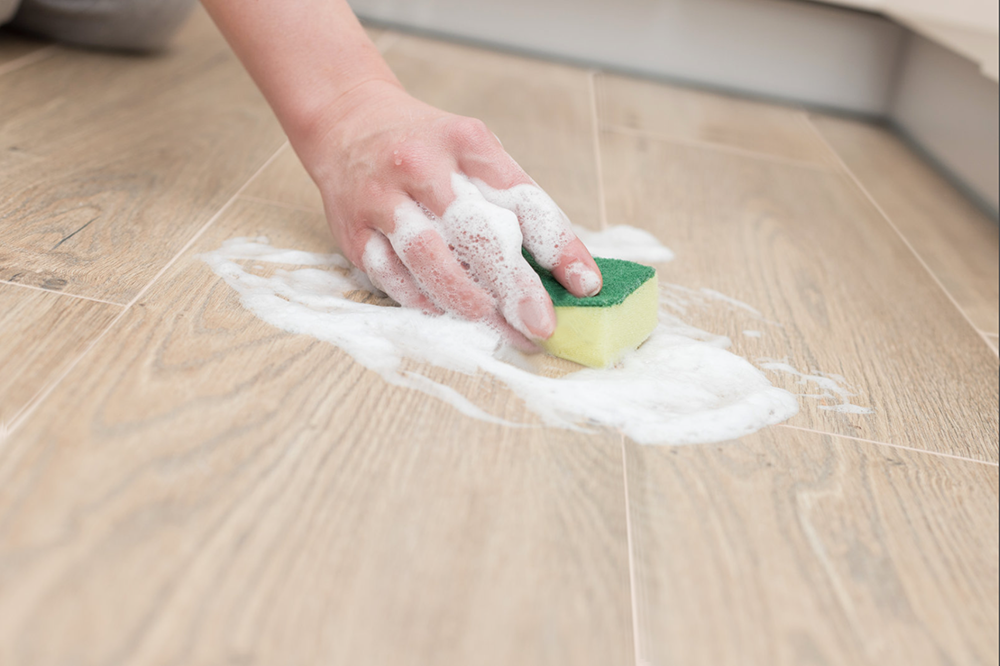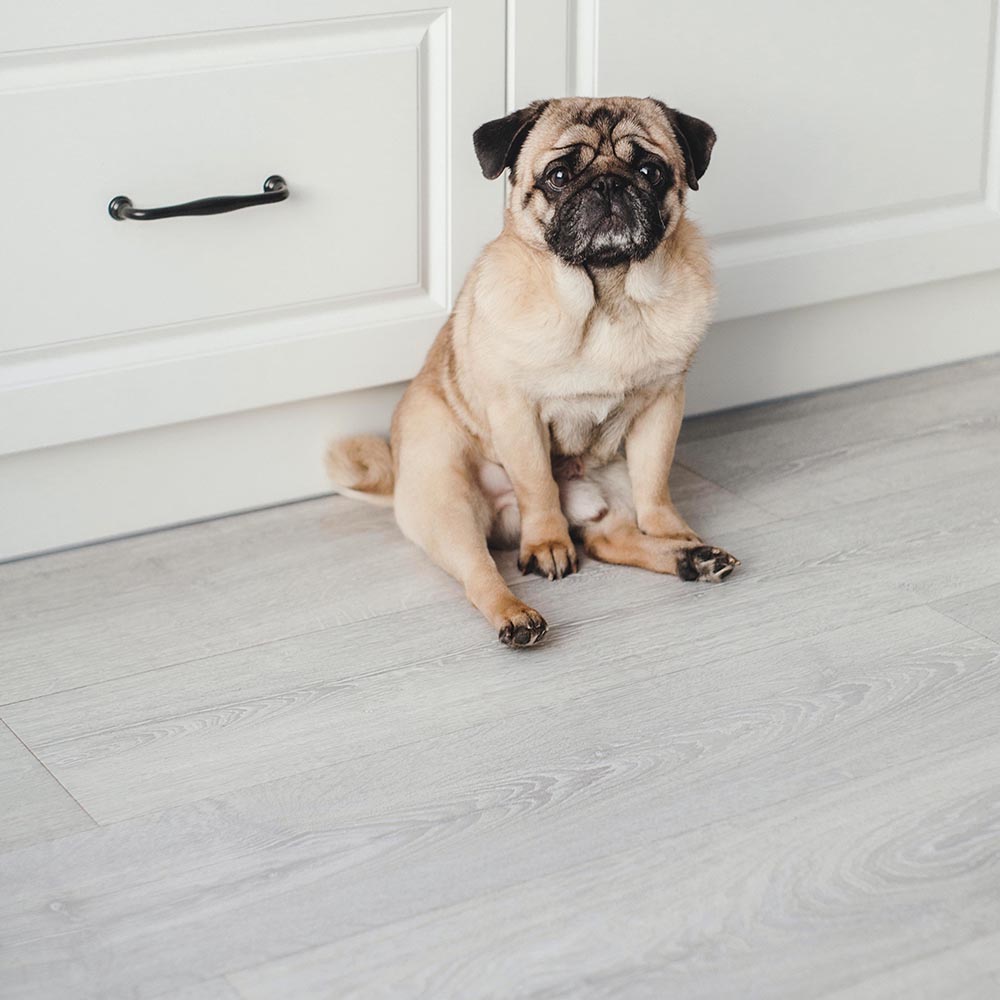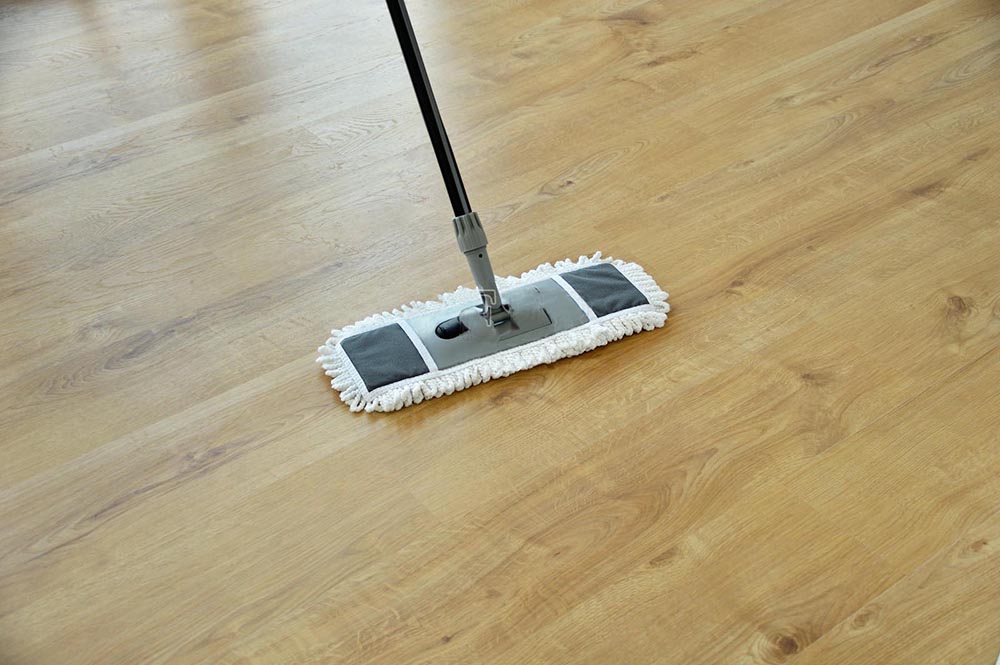SPC flooring is a workhorse—waterproof, scratch-resistant, and built to handle kids, pets, and busy households. But even the toughest floors have kryptonite. From well-meaning but harmful cleaning hacks to overlooked spills, small mistakes can turn your durable SPC into a costly repair project. Let’s break down the biggest blunders homeowners make, plus simple fixes to keep your floor looking fresh for decades.
Mistake 1: Reaching for Bleach or Harsh Chemicals
You spot a stubborn stain, grab the bleach spray, and think, “This will knock it out.” Big mistake.
Bleach, ammonia, and acidic cleaners (like vinegar-based solutions) eat away at SPC’s protective wear layer. Over time, they’ll dull the finish, create discolored patches, or even weaken the PVC core—undoing all that “waterproof” promise. I’ve seen it firsthand: a client used bleach to clean a wine spill, and six months later, the area had a hazy, permanently lighter spot that no polish could fix.
The Fix: Stick to pH-neutral cleaners. Look for labels that say “safe for vinyl or SPC flooring“—brands like Bona Hard-Surface Cleaner or Zep Neutral Floor Cleaner work great. For daily dust and grime, warm water mixed with a drop of mild dish soap (think Dawn) does the trick. It’s gentle enough to avoid damage but tough on dirt.
Mistake 2: Using the Wrong Mop (Or a Soaking Wet One)
“SPC is waterproof, so I can soak it, right?” Not exactly.
While SPC resists water, leaving pools of liquid to sit—especially around edges or under furniture—can seep into seams over time. This leads to warping, lifting, or mold growth. And those traditional string mops? They hold too much water and can push dirt into cracks, creating buildup that’s hard to remove.
The Fix: Opt for a microfiber flat mop. These tools are designed to trap dirt without saturating the floor—think of it as a gentle sweep with a damp cloth, not a bath. Wring it out thoroughly so it’s “damp, not dripping,” and focus on small sections at a time. For tight corners, use a microfiber cloth wrapped around a broom handle to reach every nook.
Mistake 3: Ignoring Pet Accidents (Even “Small“ Ones)
If you have dogs or cats, you know accidents happen. But letting pet urine sit on SPC is a recipe for disaster—even if it’s just a tiny puddle.
Urine is acidic, and over time, it breaks down the floor’s protective layer, leaving yellow stains or a lingering odor. I once helped a friend whose cat peed near a baseboard; she wiped it up “later,” but the liquid had already seeped under the floor, causing the edge to lift. The fix? Cutting out and replacing a section of the floor—way more hassle than a 30-second cleanup.
The Fix: Act fast. Blot the area immediately with a paper towel (don’t rub—you’ll spread it). Then, spray a pet-specific enzymatic cleaner (like Nature’s Miracle) on the spot—these break down urine proteins to prevent stains and smells. Let it sit for 5 minutes, then wipe with a damp microfiber cloth. For extra protection, keep a small spray bottle of enzymatic cleaner near pet areas—speed is everything here.
Mistake 4: Scrubbing Scratches with Steel Wool or Abrasives
You notice a scuff from a chair leg and grab steel wool to “buff it out.” Stop—this will make it worse.
SPC’s wear layer is tough, but abrasive tools (steel wool, scouring pads, or even hard-bristle brushes) scratch the surface, creating tiny grooves that trap dirt. What starts as a small mark becomes a permanent eyesore.
The Fix: For light scuffs, a dry microfiber cloth often does the trick—just buff gently. For deeper scratches, try a vinyl floor repair kit (look for ones with color-matched wax sticks). For furniture-related marks, add felt pads to chair and table legs—prevention is way easier than repair.
Mistake 5: Skipping Regular Sweeping or Vacuuming
“Dust is harmless, right?” Wrong.
Dirt, sand, and pet hair act like sandpaper. Every time you walk across the floor, those tiny particles grind against the surface, wearing down the finish over months. This is especially true in high-traffic areas like entryways or living rooms—skip sweeping for a week, and you’re essentially sanding your floor every time you take a step.
The Fix: Sweep or vacuum (with a soft brush attachment—no beater bars!) at least once a week. In busy areas, do it every other day. It takes 2 minutes and saves you from costly refinishing down the line. Pro tip: Keep a small handheld vacuum near the front door to tackle tracked-in dirt before it spreads.
Bonus: Pet Owners, This One‘s for You
If you share your home with a furry friend, urine isn’t the only risk. Here’s how to handle two common pet-related issues:
Claw Scratches: Trim your pet’s nails regularly (I use guillotine-style clippers for dogs—gentler than scissors). For cats, add a scratching post near their favorite resting spot to redirect their claws away from the floor.
Muddy Paws: Keep a microfiber towel and a bowl of warm water by the door. Wipe paws before they hit the SPC—mud dries quickly and becomes gritty, which leads to scratches.
SPC flooring is designed to be low-maintenance, but “low” doesn’t mean “no.” Avoid harsh chemicals, stay on top of spills, and treat your floor with gentle tools, and it will reward you with decades of use.
Post time: Sep-09-2025




